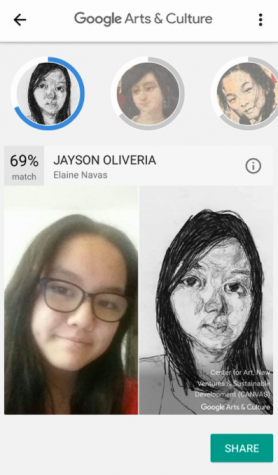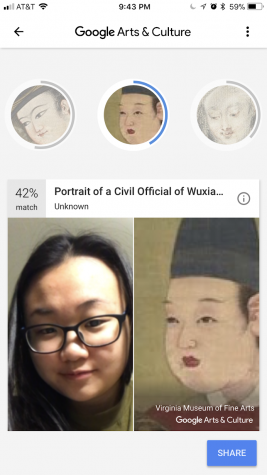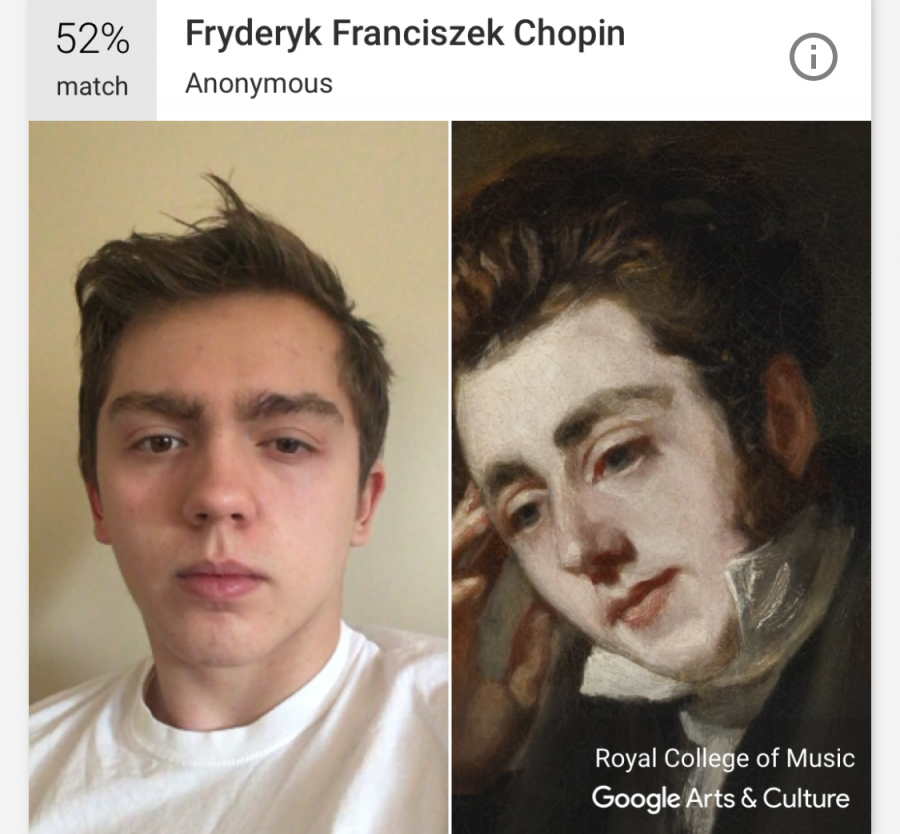Meet Your 2-D Doppelganger
Ethan Paliwoda ’19 was flattered by the comparison between his selfie and a portrait of the Polish composer Chopin, in a portrait by Anonymous.
Picture this. You are wandering the seemingly endless galleries of the Metropolitan Museum of Art, when you come upon a painting of a person who is the spitting image of yourself. The preposterous illustration shares your facial features, even your ‘vibe.’ As rare as finding your doppelganger hanging in an art gallery might seem, recently it has become a rather common occurrence (although digitized.) Google’s Arts and Culture app has a new feature that lets you find your museum ‘portrait’ through the tap of a button.
The app’s recent selfie craze is based on social media posts showing straight-faced selfies juxtaposed with painted portraits, with varying levels of resemblance between the two. Arts and Culture was originally made for art awareness and appreciation (it offers a myriad of other interesting features such high-definition ‘zoom-ins’ of paintings) and now offers a face-match function. All one has to do is take a selfie and wait for your results to pop up. Several ‘matches’ are offered, with percentages to detail just how strong the resemblance is for each.
However, responses have been mixed. Some social media posts express delight, while others are disappointed or even insulted by the comparisons. “I am very flattered,” said Ethan Paliwoda ’19, who got a portrait of the composer Chopin as his face-match. “My family especially enjoys his music.” Others were impressed. “At first I was surprised since the results did not really look like me, so I tried taking more pictures for better results,” said Lin Zhang ’19. “Overall, I think the app did detect some similarities and that is pretty awesome.” Her match was a portrait titled “Jayson Oliveria” by artist Elaine Navas.

Lin Zhang ’19 compared to a portrait of a certain Jayson Oliveria, by artist Elaine Navas.
But outside of Bronx Science, some even go as far as to claim that the artificial intelligence behind the matches is ‘racist.’ Many are, for instance, Asian-Americans who see the intelligence as lacking diverse results for Asian faces, and thus offering ‘stereotypical’ matches that ‘just look Asian.’ Catherine Shu from online news source TechCrunch wrote, “[Some] got matches filled with the stereotypical tropes that white artists often resorted to when depicting people of color: slaves, servants.”
“Many see this ‘lack’ of diverse representation as only showing the truth about Western art.”
Despite this, many see this ‘lack’ of diverse representation as only showing the truth about Western art, and its perceptions of minorities. “It just happens that history is about figures of ‘beauty’ and ‘power.’ That’s exemplified through many paintings of court officials and geishas,” said Serena Wu ’19, regarding the repeated appearance of subjects like geishas in results of Asian-American women (and men).

Serena Wu ’19 compared to a portrait of a Civil Official of Wuxiang County, by Unknown.
The original goal of the function was to make art as a whole more accessible and relatable to the culture at large, stated Amit Sood, the president of Google Arts and Culture. In his hometown of Mumbai, art was a “posh experience,” not meant for every Joe but the more highbrow. By creating ‘personalized’ art experiences, his app hopes to make the art world friendlier. But as can be seen from mixed reactions, Sood may have gained, but also lost peoples’ hearts through this cause.
Angie Yang is an Editor-in-Chief of ‘The Observatory’ and a Staff Reporter for ‘The Science Survey.’ This is her second year in Journalism. She...











